Below is a picture of what my outcome is.
I am using flat shading and have put each vertex in their respectable triangle objects. Then I use these vertices to calculate the surface normals. I have been reading that because my triangles share similar vertices that calculating the normals may be an issue? But to me this looks like a windings problem given that every other one is off.
I provided some of my code below to anyone who wants to look through it and get a better idea what the issue could be.

Triangle currentTri = new Triangle();
int triPointIndex = 0;
List<Triangle> triList = new ArrayList<Triangle>()
GL11.glBegin(GL11.GL_TRIANGLE_STRIP);
int counter1 = 0;
float stripZ = 1.0f;
float randY;
for (float x=0.0f; x<20.0f; x+=2.0f) {
if (stripZ == 1.0f) {
stripZ = -1.0f;
} else { stripZ = 1.0f; }
randY = (Float) randYList.get(counter1);
counter1 += 1;
GL11.glVertex3f(x, randY, stripZ);
Vert currentVert = currentTri.triVerts[triPointIndex];
currentVert.x = x;
currentVert.y = randY;
currentVert.z = stripZ;
triPointIndex++;
System.out.println(triList);
Vector3f normal = new Vector3f();
float Ux = currentTri.triVerts[1].x - currentTri.triVerts[0].x;
float Uy = currentTri.triVerts[1].y - currentTri.triVerts[0].y;
float Uz = currentTri.triVerts[1].z - currentTri.triVerts[0].z;
float Vx = currentTri.triVerts[2].x - currentTri.triVerts[0].x;
float Vy = currentTri.triVerts[2].y - currentTri.triVerts[0].y;
float Vz = currentTri.triVerts[2].z - currentTri.triVerts[0].z;
normal.x = (Uy * Vz) - (Uz * Vy);
normal.y = (Uz * Vx) - (Ux * Vz);
normal.z = (Ux * Vy) - (Uy * Vx);
GL11.glNormal3f(normal.x, normal.y, normal.z);
if (triPointIndex == 3) {
triList.add(currentTri);
Triangle nextTri = new Triangle();
nextTri.triVerts[0] = currentTri.triVerts[1];
nextTri.triVerts[1] = currentTri.triVerts[2];
currentTri = nextTri;
triPointIndex = 2;
}
}
GL11.glEnd();